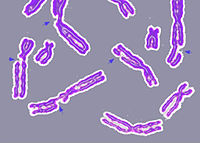
Molecular dynamics and in vitro quantification of safrole DNA adducts reveal DNA adduct persistence due to limited DNA distortion resulting in inefficient repair.
Sign Up to like & getrecommendations! Published in 2020 at "Chemical research in toxicology"
DOI: 10.1021/acs.chemrestox.0c00097
Abstract: The formation and repair of N2-(trans-isosafrol-3'-yl)-2'-deoxyguanosine (S-3'-N2-dG) DNA adducts derived from the spice and herbal alkenylbenzene constituent safrole were investigated. DNA adduct formation and repair were studied in vitro and using molecular dynamics (MD) simulations.… read more here.
Keywords: repair; dna; dna adduct; dna adducts ... See more keywords

Synergistic Interaction of Polycyclic Aromatic Hydrocarbons, Phthalate Esters, or Phenol on DNA Adduct Formation by Aristolochic Acid I: Insights into the Etiology of Balkan Endemic Nephropathy.
Sign Up to like & getrecommendations! Published in 2022 at "Chemical research in toxicology"
DOI: 10.1021/acs.chemrestox.2c00026
Abstract: Balkan endemic nephropathy (BEN) is a multifactorial environmental disease, with chronic exposure to aristolochic acids (AAs) through AA-contaminated food being one of the major etiological mechanisms. However, the bulk of previous research has only focused… read more here.
Keywords: balkan endemic; adduct formation; etiology; dna adduct ... See more keywords

Interindividual Differences in DNA Adduct Formation and Detoxification of 1,3-Butadiene Derived Epoxide in Human Hapmap Cell Lines.
Sign Up to like & getrecommendations! Published in 2020 at "Chemical research in toxicology"
DOI: 10.1021/acs.chemrestox.9b00517
Abstract: Smoking-induced lung cancer is a major cause of cancer mortality in the US and worldwide. While 11-24 % of smokers will develop lung cancer, risk varies among individuals and ethnic/racial groups. Specifically, African American and… read more here.
Keywords: cell lines; butadiene; dna adduct; lung cancer ... See more keywords

Increased Acrolein-DNA Adducts in Buccal Brushings of e-Cigarette Users.
Sign Up to like & getrecommendations! Published in 2022 at "Carcinogenesis"
DOI: 10.1093/carcin/bgac026
Abstract: DNA adducts are central in the mechanism of carcinogenesis by genotoxic agents. We compared levels of a DNA adduct of acrolein, a genotoxic carcinogen found in e-cigarette vapor, in oral cell DNA of e-cigarette users… read more here.
Keywords: dna adduct; cigarette; cigarette users; dna adducts ... See more keywords

Attenuation of Polycyclic Aromatic Hydrocarbon (PAH)-Mediated Pulmonary DNA Adducts and Cytochrome P450 (CYP)1B1 by Dietary Antioxidants, Omega-3 Fatty Acids, in Mice
Sign Up to like & getrecommendations! Published in 2022 at "Antioxidants"
DOI: 10.3390/antiox11010119
Abstract: Numerous human and animal studies have reported positive correlation between carcinogen-DNA adduct levels and cancer occurrence. Therefore, attenuation of DNA adduct levels would be expected to suppress tumorigenesis. In this investigation, we report that the… read more here.
Keywords: dna; dna adduct; fatty acids; mice ... See more keywords

Co-Exposure to Aristolochic Acids I and II Increases DNA Adduct Formation Responsible for Aristolochic Acid I-Mediated Carcinogenicity in Rats
Sign Up to like & getrecommendations! Published in 2021 at "International Journal of Molecular Sciences"
DOI: 10.3390/ijms221910479
Abstract: The plant extract aristolochic acid (AA), containing aristolochic acids I (AAI) and II (AAII) as major components, causes aristolochic acid nephropathy (AAN) and Balkan endemic nephropathy (BEN), unique renal diseases associated with upper urothelial cancer.… read more here.
Keywords: dna adduct; aai aaii; adduct formation;

The lipid peroxidation derived DNA adduct γ-OHPdG levels in paraneoplastic liver tissues predict postoperative outcomes of hepatoma
Sign Up to like & getrecommendations! Published in 2021 at "Journal of Cancer"
DOI: 10.7150/jca.56982
Abstract: Chronic necroinflammation in liver induces lipid peroxidation and oxidative stress, which contributes to hepatocellular carcinoma (HCC) development. Gamma-hydroxy-1, N2-propanodeoxyguanosine (γ-OHPdG), a promutagenic DNA adduct, is derived from lipid peroxidation. Little is known about the clinical… read more here.
Keywords: lipid peroxidation; dna adduct; peroxidation; peroxidation derived ... See more keywords